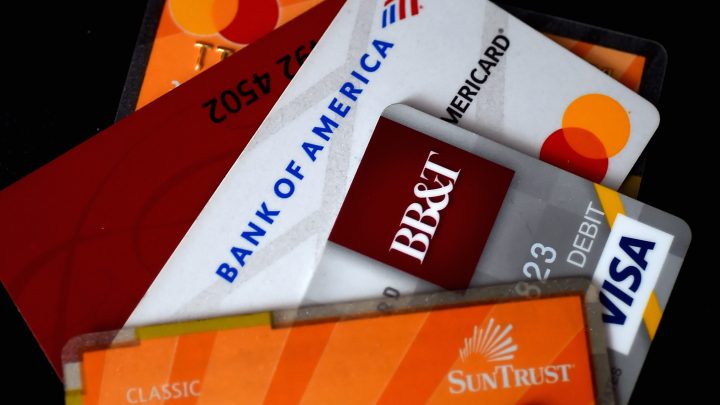
Consumer credit is up almost 7% since this time last year

Consumers are racking up debt. Or should we say after a pandemic lull, we’re back to racking up the debt.
The Federal Reserve reports that consumer credit — mainly credit cards, student loans and auto loans — was up by $27 billion in October, a billion more than in September. That makes for a 6.9% annual rate of growth, which is faster than most people’s incomes are growing in this economy.
Credit card balances alone were up 15% in the third quarter — the quickest growth in 20 years, according to the Federal Reserve Bank of New York. And consumers are still keeping up the spending at a muscular, sort of long-distance-runner-type pace.
But as we borrow more, could we be headed for trouble?
Back in early 2021, at the height of the pandemic, many Americans were getting their debt under control.
“Everyone got their stimulus checks, and a lot of people used that to pay down some of their highest-rate debt,” said Curt Long at the National Association of Federally-Insured Credit Unions. “So we had a big deleveraging.”
Then the federal money stopped flowing and prices started rising. Since then, consumers have been drawing down their savings, putting more purchases on credit cards and buy-now-pay-later plans.
“To the point that we’re now pretty much back to where we were on trend to be prior to the pandemic,” Long said. “I think this speaks to financial hardships with higher inflation.”
And keep in mind: Today’s consumer debt carries a significantly higher cost to the borrower because of the Fed’s interest rate hikes.
“These are the highest credit card rates we’ve ever seen, and we’ve been tracking this since 1985,” said Ted Rossman with Bankrate.
Higher balances plus higher interest rates dig a deeper hole for consumers. “There is a cumulative effect,” Rossman said. “And we’re worried that next year we may have a recession — hopefully a mild one. We are expecting further upticks in delinquency.”
There is an upside to rising consumer debt. Sam Stovall at CFRA Research points out that it’s a sign of strong consumer demand.
“The more that consumers buy, the lower the likelihood that we are going to be falling into recession.”
Higher debt and interest payments are also good for banks, Stovall added. Remember, they’re part of the economy too.
But what’s not so good? “If we do fall into recession, then these consumers who now have higher debt levels could have a hard time paying them off if they end up losing their jobs,” Stovall said.
Fortunately for consumers, the retailers they’re buying from and the banks they’re borrowing from, there’s no sign that unemployment is on the rise. At least not yet.
There’s a lot happening in the world. Through it all, Marketplace is here for you.
You rely on Marketplace to break down the world’s events and tell you how it affects you in a fact-based, approachable way. We rely on your financial support to keep making that possible.
Your donation today powers the independent journalism that you rely on. For just $5/month, you can help sustain Marketplace so we can keep reporting on the things that matter to you.

















